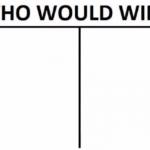But of course, numbers alone does not matter, so now we'll briefly glance over on each individual schools and their tanks, hopefully it doesn't create an entire book : there is the main school Ooarai, their best one being the Pz. IV H, then there is the British school, best tank being the A27M Cromwell, next is the US school, their best is the Firefly, there is an Italian school, their bestest being the P26/40, the Soviet school is next, T-34-85 is their best tank, and finally there is the German school, their Panther G is the best tank. Now onto the minor schools, those are the Japanese, Finnish, French, post-WW2 Germany, Polish, Spanish, Romanian, Czechoslovakian, Australian, Canadian, Burmese, Swedish, Norwegian, Belgian, Bulgarian, Turkish, and the UN school, the most "modern" tanks are used by them as they had late 40s tanks, whilst others only had mostly pre-war and mid-war stuff, there are 3 other schools, most didn't have a specific theme except one whose British, and their tanks are Pershings, a single Te-Ke tankette, and British tanks respectively. Most schools operate tanks that can be found on the 5 major schools as well as the French schools, however the tanks that were closest to an MBT would still be the Pershing and Centurion, both are armed with cannons lower than 100mm and still relied on RHA or pure steel as armor, they don't have any sort of fire control systems, and their mobility is basically subpar for modern standards, although the GuP version does match these standards, however they do have one trick up their sleeve, the Karl Gërat self propelled gun, this tank is armed with a 600mm heavy mortar that can lob heavy projectiles up to 6km away, this is a force multiplier on the battlefield and is actually a huge threat to the Abrams tanks, and even more so to the lighter Stryker and Bradley vehicles, as the force of the explosive is enough to obliterate both the top and bottom of the Abrams, and may even take out multiple tanks if they're close to each other.
 Caption this Meme
Caption this Meme